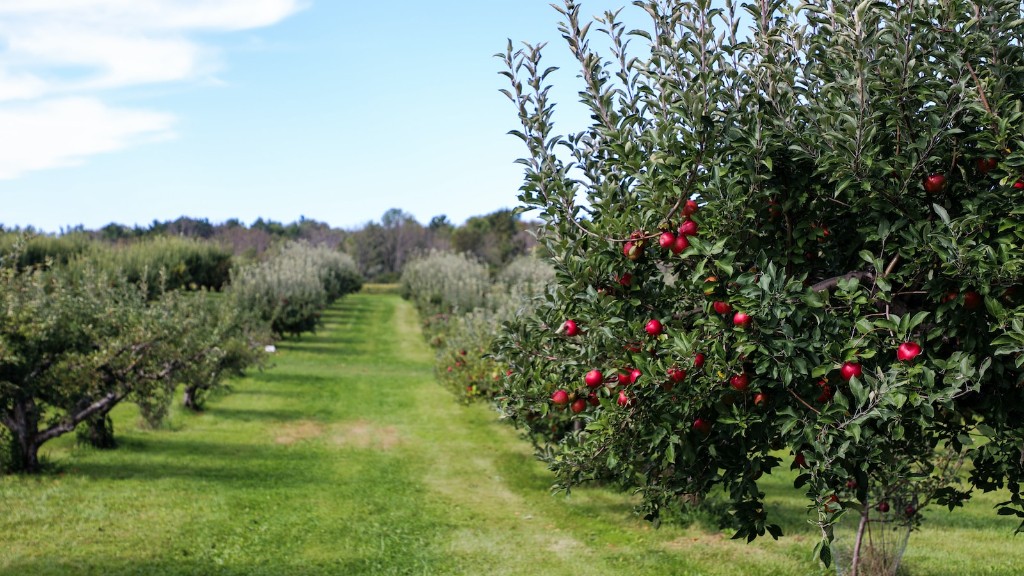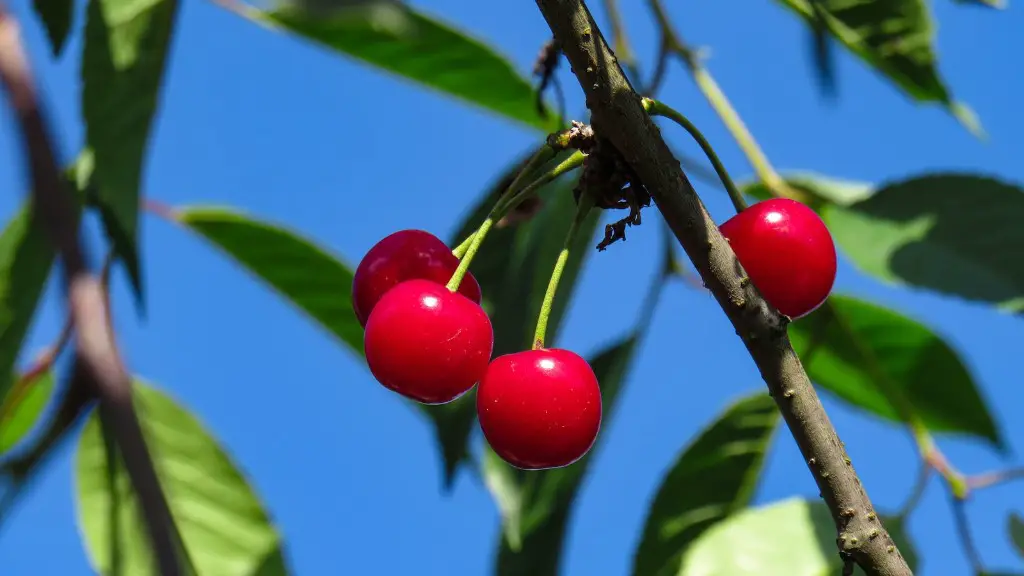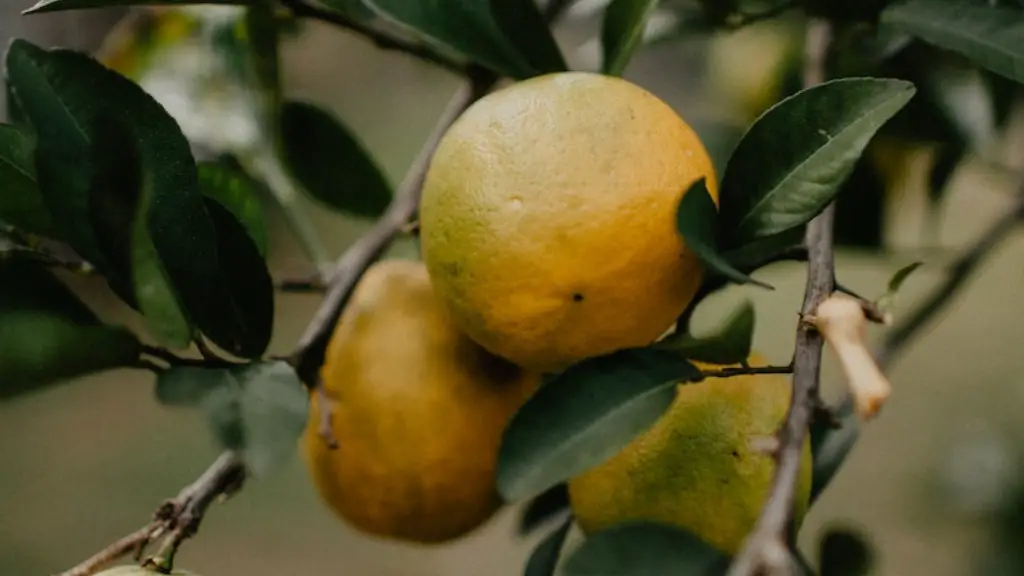What does an Apple Tree Need to Grow?
Growing an apple tree requires knowledge of the specific requirements of the apple tree species, including soil type, environmental factors, and proper management techniques. Apple trees are not particularly challenging, but they do need specific conditions to thrive.
Obviously, sufficient water is essential. Watering apple trees is most beneficial when done deeply and thoroughly; this encourages deeper root growth and prepares the tree for dry spells. Irrigation is also an option, but it is best to only use it if natural rainfall will not provide enough water. Fertilizer can also be used, but it should follow an apple tree’s fertilization schedule, which varies based on the tree variety.
For apple trees and other fruit trees, pruning is a key component of success. Prune your apple tree each year during the dormant season; this will encourage more efficient fruit production and provide you with structurally sound trees. Additionally, in order for fruit production to keep up with the needs of a home orchard, careful pollination is necessary. Planting a variety of apple trees, which bloom at different times, will ensure better pollination.
Another aspect to consider when it comes to apple tree maintenance is pest control. Disease-causing pests can be very damaging for an apple tree; proper identification of insects is important, as well as the implementation of best practices when it comes to disease management.
Lastly, bear in mind that apple trees can be slow growing; they need time to establish themselves and reach the desired size. So, be patient when growing an apple tree, as it will eventually produce fruit, given you’re attending to its needs.
Soil For Apple Tree Growth
The soil type that is best for apple tree growth is slightly acidic, with a pH between 6.0 and 6.5. The soil should be well-draining, but still retain moisture; this will ensure the roots have access to the necessary amount of water for healthy growth. Additionally, the soil should be rich in organic matter. Compost can provide the nutrients and organic matter an apple tree needs.
When deciding where to plant fruit trees, such as apple trees, it is also important to consider the availability of space. Apple trees root system can spread up to 20 feet in width, so a spot where you know the tree will have plenty of room to grow is necessary. Of course, the exact footprint depends on the cultivar; dwarf apple trees don’t need as much space.
Light Conditions For Apple Tree Growth
Light is also essential for apple tree’s proper growth. Apple trees need at least 6 hours of direct sunlight per day to produce a good yield of fruit. Planting apple trees in a location that allows maximum exposure to the sun, without competing too much with other orchard trees, is key. Therefore, pruning and training trees during the first few years of growth is essential.
When planting apple trees, it’s also important to bear in mind the influence of the environment; waterlogging, wind and frost can be detrimental to the trees’ general health, so it is important to figure out a suitable location, both for the tree’s protection and for garnering adequate sunlight for the tree to thrive.
Nutrition For Apple Tree Growth
Apple trees need sufficient nutrients to thrive and produce a good crop of fruit. Fertilizing apple trees is best done in the early summer with a slow-release, low-nitrogen fertilizer. Tree pruning is also crucial to provide good aeration, prevent overcrowding and waterlogging and promote fruit production. During the early years of growth, pruning also helps the tree to form a good structure.
Apple trees do not require a lot of special mineral nutrients, but sufficient levels of nitrogen, potassium and phosphorous are recommended. Magnesium and boron are also considered essential for proper fruit production. When establishing an orchard, soil testing prior to planting is highly recommended in order to ensure the soil has the necessary nutrients for the apple tree to be successful.
Organic Apple Tree Management
Organic methods are some of the best options when it comes to apple tree care and management. Natural fertilizers, such as compost and natural fertilizers, as mentioned previously, promote growth without damaging the environment. In case of pests and diseases, some of the best practices include using natural insecticides, such as neem oil or wood ash, and using copper-based fungicides.
Other organic practices include mulching the tree with organic matter and covering it during the winter with a tarp or frost cloth to protect the roots from the cold and ice. Also, encouraging natural pests’ predators, such as birds and frogs, can be an efficient and environmentally friendly way of controlling pests.
Disease Prevention For Apple Trees
Disease prevention is a key component of successful apple tree growth. Disease can be caused by poor tree management, poor air circulation, an excess of water, or even warm temperatures. In order to prevent disease, it is important to figure out the cause and take steps towards correcting the problem.
Appropriate maintenance and management practices for the climate in which the tree is being grown is essential; this includes pruning, avoiding overcrowding, irrigation management, and pest control. Good airflow, both through pruning and arrangement of trees, is also essential. Proper sanitation methods add an extra layer of defense, as they help minimize the spread of diseases. For example, removing fallen fruits and leaves from the orchard will make it an inhospitable environment for disease-causing organisms.
Apple Tree Pollination
Pollination is an important factor in apple tree establishment and fruit production. Apple trees are self-sterile; this means that pollen from one variety of apple tree needs to be transferred to another for pollination to take place. The best way to ensure good pollination is to have two or more apple trees of different varieties. During the blooming season, a little bit of work will be needed to ensure successful pollination thanks to bees, a brush, and/or other means.
Genetic diversity is also important when it comes to apple tree pollination; this increases the chances of having sufficient pollinators in the field and of having more successful pollination. For the same purpose, avoiding planting too many apple trees of one variety only is desirable. That being said, if you want an orchard of the same variety, you can compensate by planting trees of different genetic backgrounds.
Apple Tree Varieties
Apple trees come in different sizes, shapes, and colors, so it’s important to decide which variety is right for the project or orchard. For example, the classic Granny Smith apples are firm and tart, while Red Delicious are mild and sweet. Fuji apples are also sweet, but firm and crunchy, while Golden Delicious tend to be slightly tart. Each variety also comes with different needs in terms of water and soil.
The type of apple tree you decide to plant also depends on the climate; some varieties are better suited for wetter climates, while others for colder ones. For example, Lobos is a high quality apple tree variety that requires minimal chill and does well in warmer climates. Honeycrisp apples perform best in cold climates and need a certain amount of chill hours for proper development.
Finally, location is also key when it comes to apple tree maintenance; pruning and harvesting are easier if the trees are close to the house, while too much shade will be detrimental. The key to a successful apple tree establishment is doing some research and choosing the right location, variety and management plan.



